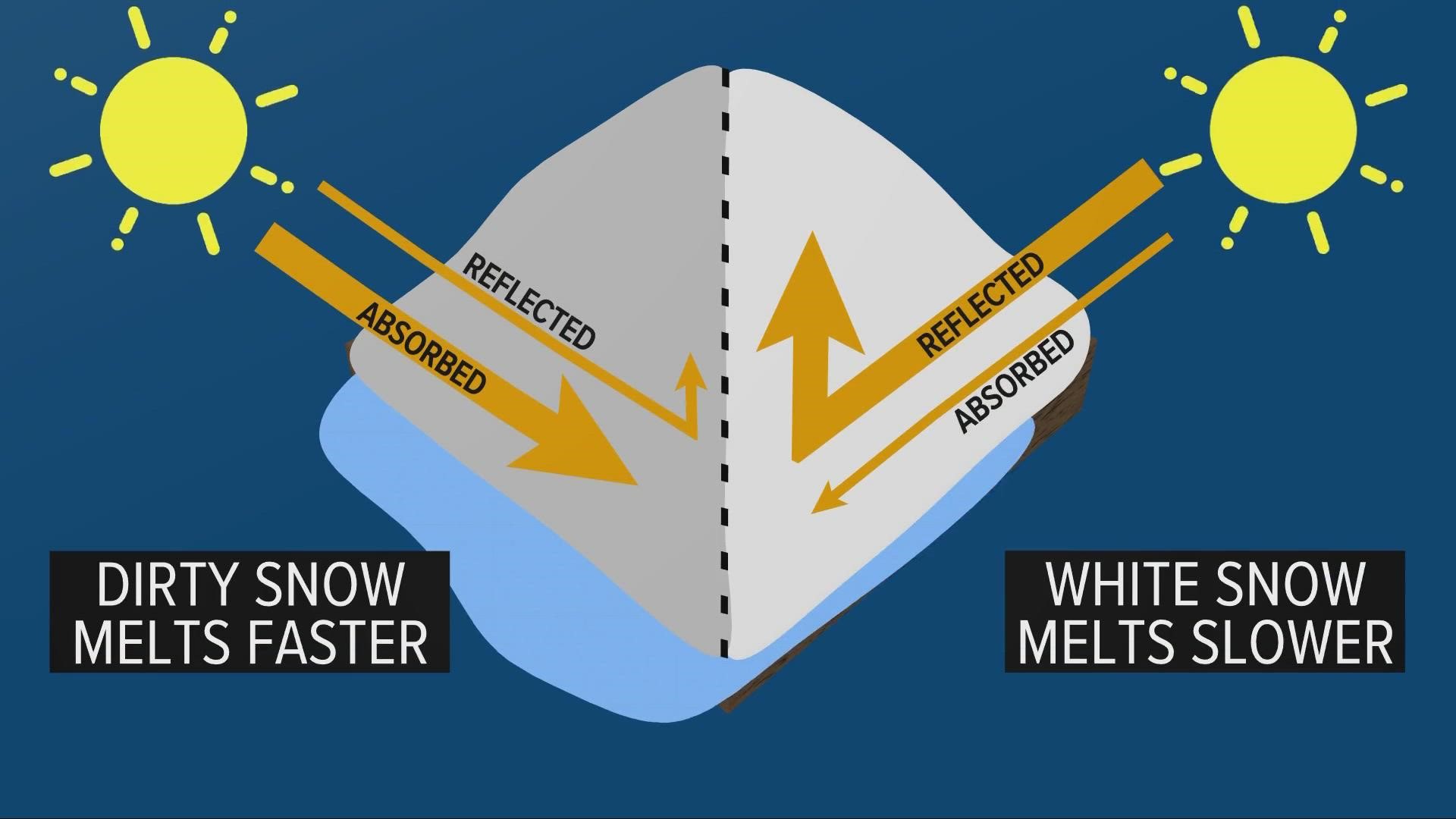SACRAMENTO, Calif. —
Snowmelt in the Sierra typically peaks in April and May. The buildup of winter snow melts with the warmer spring temperatures and access to sunlight.
But in the Feather River Basin above Lake Oroville, last year’s Dixie Fire is having a surprising effect on melting snow.
Tom Painter, CEO of Airborne Snow Observatory, calculated shocking snow loss in the Sierra where the Dixie Fire tore through nearly half of the Feather River basin above Lake Oroville.
He says what his survey group found was damaged trees sloughing off black carbon, or soot, and leaving it on the snowpack. By their estimates, this resulted in the snowpack absorbing 50% more sunlight.
Absorption of sunlight is the major contributor to snowmelt. Lighter snow reflects sunlight but darker snow absorbs sunlight and leads to a higher melt rate.
Tom says what’s happening in the Feather River Basin is accelerating the snowmelt at an alarming rate. He says it's like if we were to take Earth and move it closer to the sun than Venus is.
Snowmelt provides one-third of the state's water needs through the dry months. Timing the melt helps water managers determine allocation and availability.
This is already been a growing challenge as the climate warms and more rain falls in the Sierra than snow. The rapid melting adds another layer of how to adjust for more water coming down the hill and filling our reservoirs, earlier in the season.
And it's another reminder of the year-round impacts of growing fire danger in California.



















